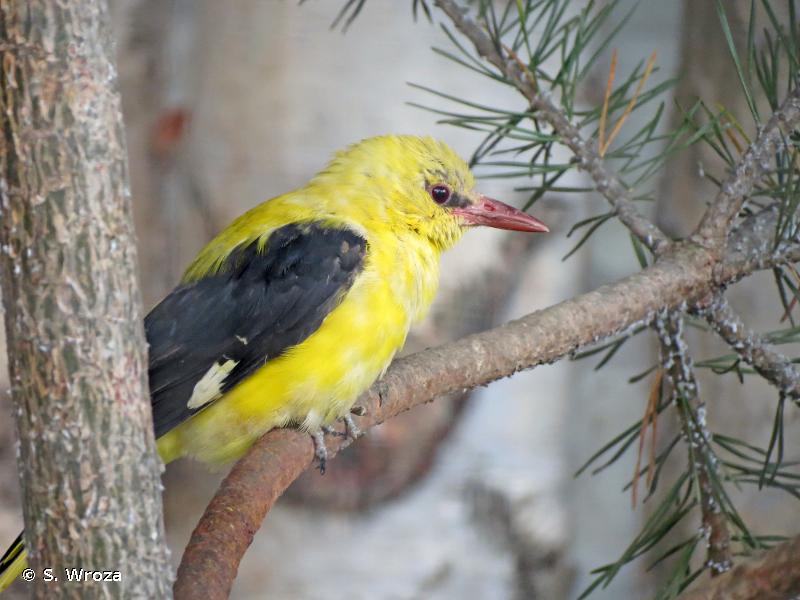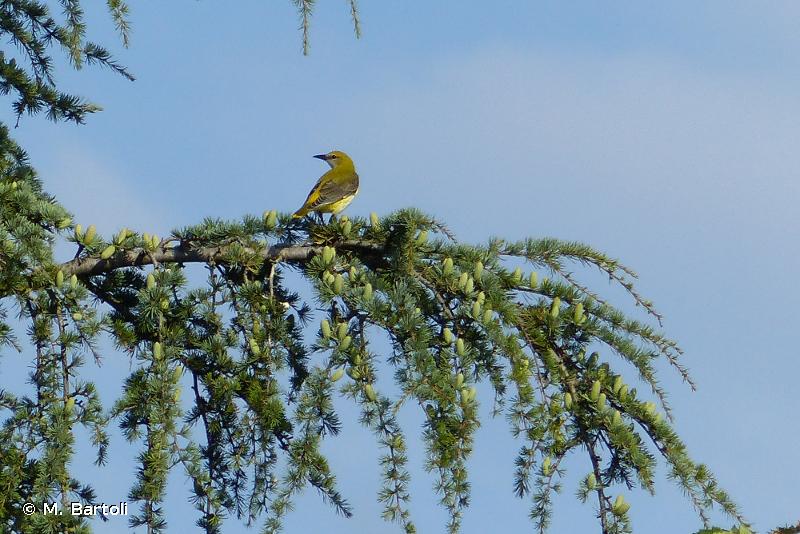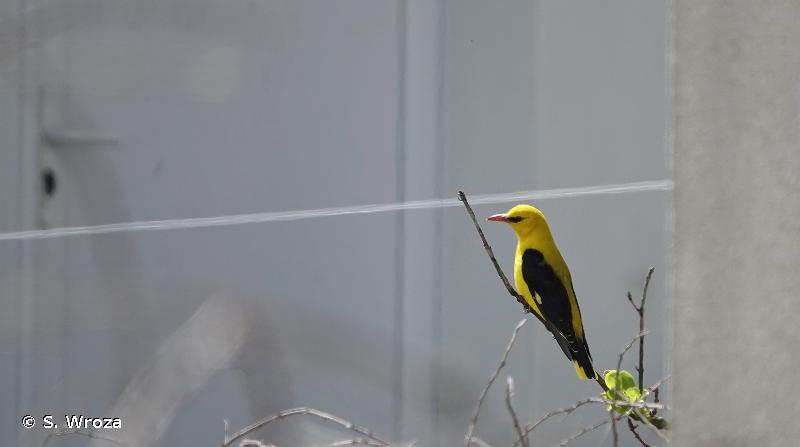
cd_nom

| Author : V. Roguet |
 |
To get the picture, please visit:
Véronique Roguet
286 Tour des Dallest
13830 Roquefort la Bédoule
email : inpn@mnhn.fr
Despite the Creative Commons license, please inform the author of the use which will be made of his photo

| Author : S. Wroza |
 |
Despite the Creative Commons license, please inform the author of the use which will be made of his photo

| Author : M. Bartoli |
 |
To get the picture, please visit:
Michel Bartoli
email : inpn@mnhn.fr
Legend: Jeune
Despite the Creative Commons license, please inform the author of the use which will be made of his photo

| Author : S. Wroza |
 |
Despite the Creative Commons license, please inform the author of the use which will be made of his photo
Taille/poids :
Longueur totale : 24 cm. Poids : 56 à 79 g.
Diagnose :
Le mâle possède une livrée d'un jaune intense sur tout le corps, de la tête au croupion, contrastant fortement avec les ailes noires. La femelle, aux couleurs plus discrètes, a un manteau vert olive, le croupion et les flancs jaunâtres, les rectrices brun verdâtre et le dessous blanchâtre. L'un des cris, miaulant, éraillé et disgracieux poussé par les deux sexes, contraste fortement avec le chant du mâle particulièrement flûté et mélodieux.
Détermination :
Période d'observation :
Mai à août-septembre.
Biologie-éthologie :
L'essentiel de la nourriture est prélevé dans les frondaisons. Le régime du Loriot traduit bien l'exploitation de ces strates. Au printemps, l'espèce consomme beaucoup d'insectes : chenilles de papillons diurnes et nocturnes, libellules, mouches et hyménoptères. A la fin de l'été, les baies sauvages sont préférées, de même que les fruits.
Biogéographie et écologie :
Cette espèce niche dans la zone paléarctique, du Maroc à l'Asie centrale, entre les latitudes 30° et 60°N. L'habitat du Loriot associe deux composantes principales que la plupart des espèces du genre Oriolus trouvent en région tropicale : un environnement chaud, ce qui tend à limiter son implantation en altitude ; un habitat forestier frais et humide, aux frondaisons luxuriantes, mais doté de clairières. L'espèce apprécie en effet un certain effet de lisière. Cette dernière exigence l'amène à s'installer préférentiellement dans les forêts riveraines des cours d'eau, les alignements d'arbres bordant les eaux libres, les peupleraies. La proximité de l'eau n'est toutefois pas indispensable et l'espèce s'observe aussi dans les parcs arborés, bosquets, vergers et allées de grands arbres.
Compilé par J. Comolet-Tirman à partir des Cahiers d’habitats.(UMS 2006 Patrimoine Naturel (AFB / CNRS / MNHN)),2017
Continental
Metropolitan France
Overseas
Marine
Metropolitan France
Overseas
The map presents a summary at the 10 x 10 km grid of the observation data for the species transmitted to the SINP. These data have been subjected to validation filters.
The map presents a reference distribution layer of the species at the scale of departments and marine sectors. The presence and absence data were established by expertise within a network of partners. This reference distribution is used in the validation process of the SINP data at the INPN level.
Corresponds to a report on the basis of at least one observation proved within a period of 10 years (20 years for little-known invertebrates) preceding the year and no presumption of extinction since obtaining the last data nor doubt on reproductive and implemented nature of this population. For migratory species, the presence indicated concerns areas of reproduction.
This status is based on one or more of the following criteria:
This point covers the absence, more difficult by nature to demonstrate than presence. This status is based on one or more of the following criteria:
This status must be assigned to a department in which the presence of the species is casual.
Particular case of absence due to a proven extinction less than a half century ago (older disappearances are treated as "no probable or definite").
In the state of knowledge, we can not comment on the presence or absence in the current department. This is the default status when not comprised in one of the previous categories or whenever there is doubt.
The map shows the global distribution of the species based on GBIF data (Global Biodiversity Information Facility).
